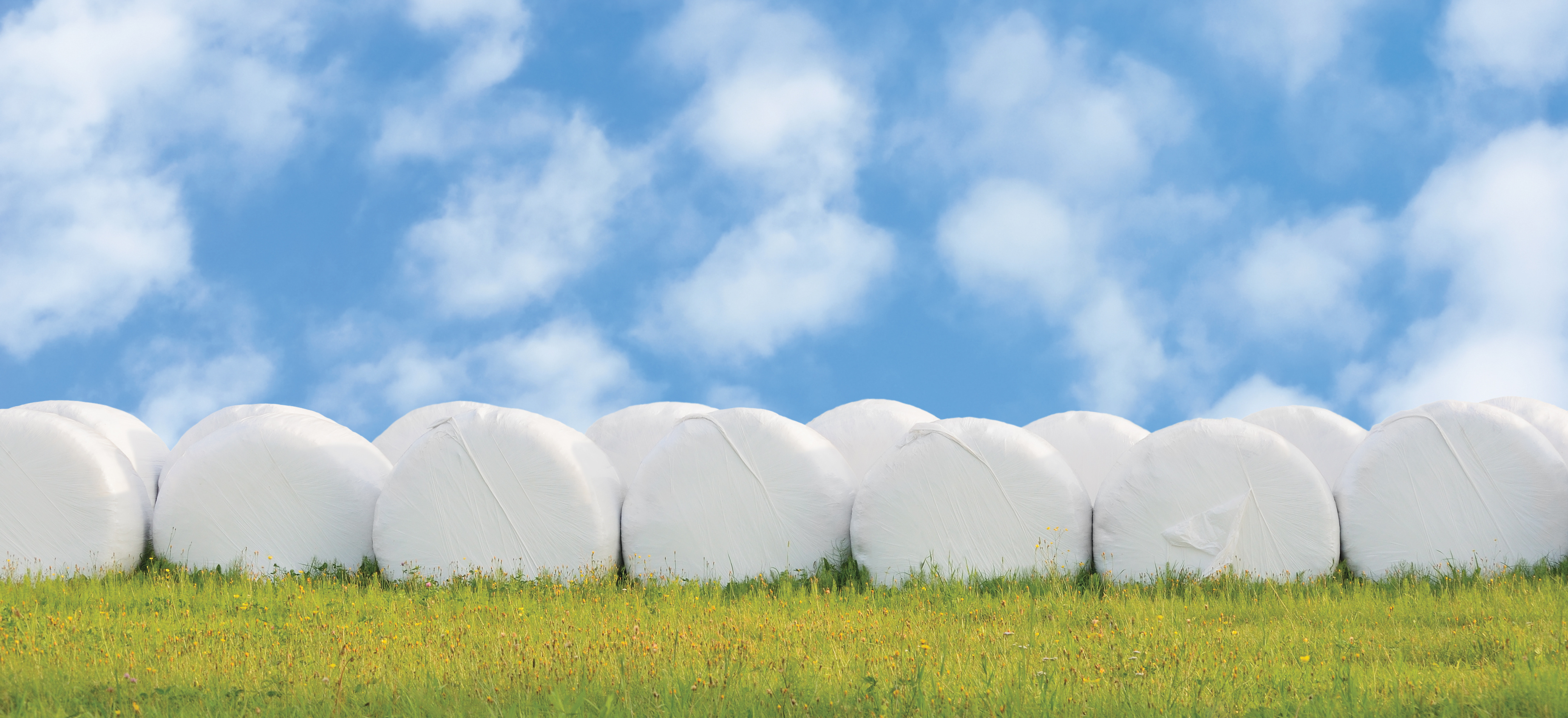Time right to consider spring silage
03 Aug 2021
 PRODUCTION ADVICE - AUGUST 2021 - AGRONOMY
PRODUCTION ADVICE - AUGUST 2021 - AGRONOMY
By Janelle Jenkins
Senior Land Services Officer - Mixed Farming Systems
M: 0427 639 947 | E: janelle.jenkins@lls.nsw.gov.au
 Silage production, particularly wrapped round or square bales, is a popular method of conserving excess spring growth of pastures and forage crops. After a dry start in autumn, the season has turned around, with good winter rainfall across many parts of the Murray catchment. Additionally, with the relatively low livestock numbers and high restocker prices, many producers are considering making silage out of their excess spring growth.
Silage production, particularly wrapped round or square bales, is a popular method of conserving excess spring growth of pastures and forage crops. After a dry start in autumn, the season has turned around, with good winter rainfall across many parts of the Murray catchment. Additionally, with the relatively low livestock numbers and high restocker prices, many producers are considering making silage out of their excess spring growth.
Often silage harvest is delayed to increase harvest quantity (kgDM/ha), but for maximum silage quality, pastures need to be cut early when they are at or near canopy closure, and forage crops need to be cut in the early boot stage. This equates to the optimum stage of growth for grazing in spring. Providing pastures are at or only slightly past grazing height, and harvested in good weather conditions, the silage produced (if ensiled properly) will be only marginally less than if the same pasture had been grazed directly by livestock. Wilting rate of the mown pasture/forage has a big impact on silage quality and needs to be undertaken correctly to get the best silage product.
Choice of silage method will depend on machinery and contractors available and relative cost. Bulk chopped silage may be a cheap option, but you need to have the right equipment to feed this product out. Wrapped bales are easier to feed out but incur the cost of plastic and therefore must be of premium feed quality to be profitable.
Early thinking about spring silage should include maintenance of machinery, storage areas and tracks, sourcing plastic, twine or net wrap and inoculants. Growers should make early and regular contact with contractors to help reduce problems accessing them when needed.
Soil fertility and weed management are major considerations for paddock selection and management. Silage removes large amounts of nutrients, including nitrogen (N), phosphorous (P), potassium (K) and sulphur (S). In preparing for spring silage, nitrogen and potassium will need to be managed to ensure good growth and yield as well as feed quality and high-quality silage. Deficiencies will limit yield, but excess can also be a problem. Fertility issues will increasingly become an issue that needs to be monitored if silage (or even hay) is taken from the same paddocks regularly.
If potassium is needed, then split applications will need to be applied - one in early in spring to allow growth and then again after the silage has been harvested to replace nutrients taken. This will reduce the risk of “luxury” uptake of excess K in the soil. This is when plants absorb more K than needed, meaning you lose fertiliser while the silage contains excess K that may result in associated feed quality issues.
Nitrogen also needs to be applied wisely. Topdress early in spring to ensure good growth and improved quality. If topdressing occurs too close to harvesting, excess nitrogen can interfere with silage fermentation and nitrate poisoning may also be a risk.
It is possible to calculate the amount of N fertiliser that needs to be applied once you have a target yield (kgDM/ha) and target crude protein level in the resultant silage.
Weed management is a major consideration in paddock selection, both from a silage quality and weed control perspective. Using silage for weed control is highly effective and is becoming more important as increasing herbicide resistance affects more farmers.
Silage will help reduce weeds in two ways. Early harvest (compared to hay) means the weed seeds are often not fully developed; and the silage fermentation process will significantly reduce weed seed viability if there is any mature seed harvested.
From a silage quality perspective, grass weeds are generally not a big issue, but broadleaf weeds can affect quality. Many broadleaf weeds such as capeweed have a high buffering capacity and low water-soluble carbohydrate levels, making it hard to achieve a good fermentation. Weeds such as Patersons curse also contain pyrrolizidine alkaloids, which cause liver damage even when ensiled. When choosing which paddocks to cut for silage, either control weeds early or avoid very bad weed infestations
Table 1. Yield and quality potential of crops grown for silage production, identifying requirements to ensure quality silage.
Crop | Perennial ryegrass and clover | Annual/biennial ryegrass | Temperate perennial grasses and clover | Pasture legumes | Lucerne |
Growth stage at harvest | 1st head emerge on ryegrass | 10-20% head emergence | Stem elongation of grass component | Early to mid flowering | Very early (10% flower) |
Potential yield2 (t DM/ha/cut) | 2.5-4 | 2.5-4 | 2-4 | 2-3.5 | 1.5-3.2 |
Wilting requirement | Yes | Yes | Yes | Yes | Yes |
Target range DM content (%) | |||||
Chopped | 30-40 | 30-40 | 30-40 | 35-40 | 35-40 |
Baled | 35-50 | 35-50 | 35-50 | 35-50 | 35-50 |
ME (MJ/kg DM) | 9.5-11 | 9.5-11 | 9.5-10.5 | 9.5-11.5 | 9.5-10.5 |
Crude protein (% DM) | 12-22 | 12-20 | 12-16 | 14-26 | 18-24 |
Source: Silage Note 4 – Selecting pastures and crops for silage production
References:
- AFIA Planning for Spring Silage - Neil Griffiths, Technical Specialist Pasture Production, NSW DPI
- Quality Pasture Silage - Dairy Australia
- Successful Silage, TopFodder - NSW DPI and Dairy Australia